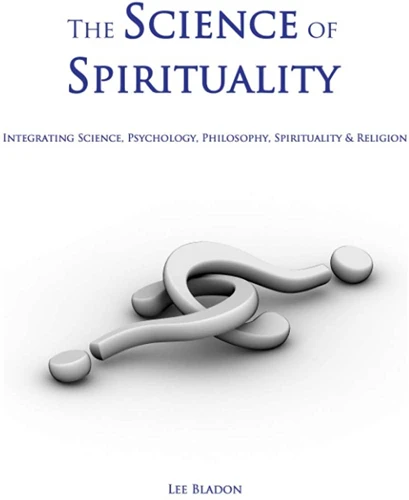As we navigate the complexities of modern life, many of us crave moments of peace and clarity. This is where meditation comes in. It’s often touted as a solution to stress, anxiety, and other challenges of daily living. But what is meditation, exactly? What are its origins, and how has it evolved over time? And what exactly are the benefits of this ancient practice, both for our bodies and our minds? In this article, we’ll explore the fascinating history of meditation, delve into the science behind it, and provide practical techniques for enhancing your own practice. Whether you’re a seasoned meditator or just starting out, this is your guide to the transformative power of this timeless practice.
The Origins of Meditation
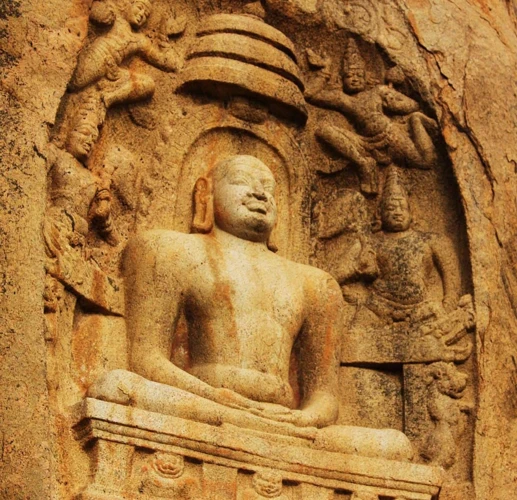
As we delve into the history of meditation, we find ourselves transported back to ancient times where this practice was first introduced. It’s perplexing to think how a practice that has now become so mainstream began as a tool for those seeking spiritual enlightenment. Through the years, meditation has evolved and adapted to suit different cultures and religions. Let’s explore the roots of this ancestral practice and how it gradually made its way into the western world.
The Roots of Ancient Meditation
Meditation has been practiced for centuries, with its roots tracing back to ancient cultures around the world. Different forms of meditation were used for various purposes, from religious and spiritual practices to achieving a calm state of being.
Here are some examples of ancient cultures that practiced meditation:
| Culture | Type of Meditation |
|---|---|
| Indian | Yoga meditation, Vipassana meditation |
| Chinese | Taoist meditation |
| Buddhist | Zen meditation, Vipassana meditation |
| Christian | Contemplative meditation |
The purpose of meditation in ancient cultures varied, but it often involved achieving a higher state of consciousness, connecting with a deity or spiritual force, or promoting healing and well-being. Meditation was seen as a way to achieve inner peace, improve focus and concentration, and reduce stress and anxiety.
Indian yoga meditation, for example, was a practice that focused on breathing techniques and physical postures to achieve a state of deep relaxation and meditation. Buddhist Zen meditation aimed to gain insight into the nature of existence and achieve enlightenment.
Today, many of these ancient practices have become integrated into modern meditation techniques. The understanding and techniques of ancient meditation have been further developed by researchers and meditation experts to provide a scientific explanation for its benefits.
Introduction of Meditation to the West
In the late 19th and early 20th centuries, various Western intellectuals and spiritual seekers began to take an interest in Eastern religions and philosophies, including Buddhism, Hinduism, and Taoism. Along with this interest came an introduction to the practice of meditation.
One key figure in bringing meditation to the West was Swami Vivekananda, an Indian spiritual leader who gave a series of lectures in the late 1800s which introduced Raja yoga meditation to Western audiences. Vivekananda’s teachings had a profound influence on a number of prominent Western figures, including William James, the father of American psychology, and Aldous Huxley, the British author best known for his novel “Brave New World.”
Another influential figure in the Western adoption of meditation was Paramahansa Yogananda, an Indian guru who founded the Self-Realization Fellowship in the United States. Yogananda’s teachings focused on Kriya yoga meditation, which involves a series of breathing exercises and other techniques designed to help individuals achieve spiritual enlightenment.
In the 1960s and 1970s, meditation became more mainstream in Western societies. This was in part due to the interest in Eastern spirituality that arose during this time, as well as the growing awareness of the health benefits of meditation. In particular, the practice of transcendental meditation (TM) gained popularity, thanks in part to the efforts of figures like Maharishi Mahesh Yogi who traveled to the West to promote it.
Today, meditation is widely practiced in the West, with a range of techniques and styles available for individuals to choose from. Whether as a way to reduce stress, improve mental health, or deepen their spiritual practice, many people continue to find meditation to be a valuable tool for personal growth and well-being.
The Benefits of Meditation

As we navigate through the ebbs and flows of daily life, it’s easy to become overwhelmed by stress, anxiety, and the pressure to perform. However, one ancient practice has stood the test of time and offers profound benefits for both physical and mental well-being. Meditation, a practice that dates back thousands of years, has become increasingly popular in modern times due to its scientifically proven benefits. From reducing stress to increasing focus and enhancing overall happiness, the advantages of weaving meditation into your daily routine are numerous. Let’s explore the benefits of meditation and how it can help you unlock your full potential.
Physical Benefits
Regular meditation practice has been found to have numerous physical benefits, which are just as important as the mental and emotional benefits. Here are some of the most significant physical benefits of meditation:
- Reduced Blood Pressure: High blood pressure is a major risk factor for heart disease and stroke. Fortunately, research has found that regular meditation practice can help to reduce blood pressure levels, which in turn can lower your risk of heart disease and stroke.
- Improved Immune System Functioning: The immune system is responsible for fighting off infections and diseases. Studies have shown that regular meditation practice can also enhance the functioning of the immune system, making it more effective at protecting the body from harmful invaders like viruses and bacteria.
- Increase in Energy: Meditation can also boost your energy levels. This is because it helps to improve blood flow and oxygenation throughout the body, resulting in greater vitality and stamina.
- Decreased Inflammation: Chronic inflammation is linked to a host of health problems, including autoimmune conditions, digestive disorders, and even cancer. Research has found that meditation can help to reduce inflammation in the body, which can in turn alleviate these conditions.
- Better Sleep: Sleep is essential for good health, but many people struggle with insomnia or poor quality sleep. Fortunately, meditation has been found to be an effective tool for improving sleep quality and duration, helping people to wake up feeling more rested and refreshed.
- Improved Digestion: Meditation has also been found to improve digestion and alleviate digestive problems like irritable bowel syndrome (IBS). This is because it helps to reduce stress and anxiety, which are common triggers for digestive issues.
The physical benefits of meditation can play an important role in maintaining good health and preventing disease. Incorporating meditation into your daily routine can lead to a healthier, more vibrant and energetic you.
Mental and Emotional Benefits
Meditation is known for its numerous mental and emotional benefits. Let’s take a closer look at some of the benefits that practitioners can expect to experience.
| Benefit | Description |
|---|---|
| Stress Relief | Meditation helps reduce cortisol levels, a hormone associated with stress, leading to a decrease in stress and anxiety. |
| Better Focus and Concentration | With regular practice, meditation can improve focus and attention, leading to better task performance and productivity. |
| Improved Emotional Regulation | Regular meditation practice has been shown to increase activity in the prefrontal cortex, leading to better emotional regulation and decreased reactivity to negative emotions. |
| Increase in Positive Emotions | Meditation can increase the production of serotonin and dopamine, neurotransmitters associated with happiness, leading to a more positive outlook on life. |
| Decreased Symptoms of Depression and Anxiety | Studies have shown that regular meditation practice can decrease symptoms of depression and anxiety in individuals with diagnosed mental health disorders. |
| Increased Self-Awareness | Mindfulness meditation specifically can increase self-awareness and self-reflection, leading to a better understanding of oneself and one’s thought patterns. |
These mental and emotional benefits make meditation a valuable tool for anyone looking to improve their overall well-being. With consistent practice, individuals can expect to see an improvement in their mood, ability to handle stress, and overall quality of life.
Science and Meditation
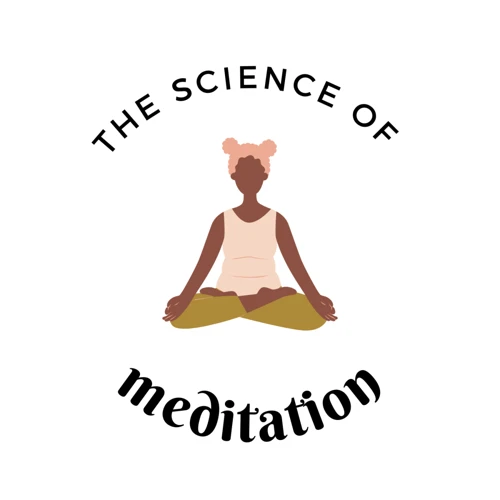
As the practice of meditation has grown in popularity over the years, many scientists and researchers have become curious about the effects it has on the mind and body. Through the use of various scientific techniques, they’ve delved into the world of meditation to uncover some fascinating insights. From exploring the impact meditation has on the brain to its correlation with spiritual practices, the links between science and meditation are constantly being discovered and developed. In this section, we will examine the scientific aspects of meditation and its benefits, as well as diving into different types and techniques to enhance the practice. So, let’s take a closer look at the intersection of science and meditation.
Research on the Brain and Meditation
Numerous studies have been conducted to explore the impact of meditation on the brain. According to research, consistent meditation practice can lead to changes in brain structure and function.
A study conducted at Harvard University found that regular meditation can lead to increases in gray matter volume in areas of the brain associated with memory, empathy, and stress management. Another study at the University of California, Los Angeles found that meditators had more gray matter in the left prefrontal cortex, which is associated with positive emotions and reduced anxiety.
Research has also shown that meditation can change the way the brain processes information. A study conducted at the University of California, Davis found that participants who practiced meditation had increased alpha rhythm brainwaves, which are associated with relaxation and a reduction in distracting thoughts.
Furthermore, research has demonstrated that meditation can lead to changes in brain function during specific tasks. A study at the University of Wisconsin-Madison found that participants who underwent meditation training had increased activity in the anterior cingulate cortex, an area of the brain associated with attention and self-regulation.
These studies suggest that meditation can lead to positive changes in brain structure and function, and can help individuals better regulate their emotions and attention.
How Meditation Impacts Health
Meditation has an array of health benefits that have been reported through various studies. Let’s take a look at how meditation impacts health.
| Health Benefit | Description |
|---|---|
| Reduces Stress | Meditation encourages relaxation and reduces the production of cortisol, the hormone responsible for stress. |
| Lowers Blood Pressure | Studies have shown that consistent meditation practices lower blood pressure and reduce the risk of hypertension—the leading cause of heart disease. |
| Boosts Immunity | Meditation has been shown to stimulate the production of white blood cells which are responsible for fighting diseases. |
| Relieves Anxiety and Depression | Meditation can help reduce symptoms of anxiety and depression by promoting mindfulness and positive thinking. |
| Improves Sleep | Studies show that meditation practices can help you fall asleep faster and improve the quality of your sleep. |
| Decreases Inflammation | Chronic inflammation is linked to several diseases, such as arthritis, cancer, and heart disease. Meditation has been scientifically proven to decrease inflammation in the body. |
In addition to the above benefits, research shows that consistent meditation practices can lead to an improvement in overall mental and physical health. By incorporating meditation into your daily routine, you can cultivate a state of peace and harmony within yourself, leading to a healthier and happier life.
Spiritual and Scientific Correlates
There is a growing body of research exploring the spiritual and scientific correlates of meditation. Some of the spiritual benefits of meditation include an increased sense of connectedness to the world and a greater understanding of one’s purpose in life. Scientifically, meditation has been shown to lower stress and anxiety levels, improve cognitive function and focus, and boost the immune system.
Below are some examples of the spiritual and scientific correlates of meditation:
- Increased empathy and compassion: Studies have shown that regular meditation can increase empathy and compassion towards oneself and others. This is believed to be due in part to the way that meditation allows one to build a deeper connection with their inner self and the world around them.
- Lowered stress levels: One of the most well-known benefits of meditation is its ability to lower stress levels. By calming the mind and body, meditation helps to reduce the negative effects of stress on the body, such as high blood pressure and heart disease.
- Improved brain function: Regular meditation has been shown to improve cognitive function and focus. This is believed to be due to the fact that meditation can help to increase blood flow and oxygen to the brain, which in turn can improve overall brain function.
- Higher levels of creativity: Meditation has been shown to increase creativity and problem-solving abilities. This is believed to be due to the way that meditation helps to calm the mind, which can lead to greater mental clarity and focus.
- Greater sense of purpose: Many people who practice meditation report feeling a greater sense of purpose and direction in their lives. This is believed to be due to the way that meditation allows them to connect with their inner selves and gain a deeper understanding of their own values and beliefs.
- Improved immune system function: A growing body of research has shown that meditation can boost the immune system, helping to protect the body against illness and disease.
These are just a few examples of the spiritual and scientific benefits of meditation. As more research is conducted in this area, it is likely that we will continue to uncover even more fascinating correlations between this ancient practice and our modern understanding of the world.
Types of Meditation
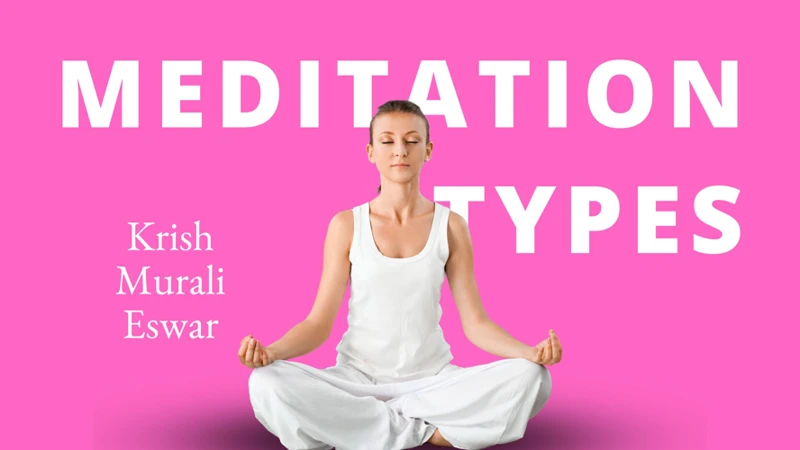
As the practice of meditation has gained popularity in recent years, a wide range of meditation techniques has emerged. Each technique is unique in its approach and philosophy, making it important for practitioners to explore different styles and find what resonates with them. In this section, we will delve into a few popular meditation techniques, including mindfulness meditation, transcendental meditation, guided visualization meditation, and loving-kindness meditation. By exploring the differences and similarities between these practices, you’ll be able to find the right form of meditation to deepen your practice and enhance your life.
Mindfulness Meditation
Mindfulness meditation is a popular form of meditation that has gained much attention in recent years. It involves focusing one’s attention on the present moment, without judgment or distraction. The goal of this type of meditation is to increase awareness and the ability to be present in the moment.
|Key Points|
|———–|
| – Focus on present moment|
| – No judgment or distractions|
| – Increase awareness|
Mindfulness meditation can be practiced in a seated or lying-down position, and involves bringing your attention to your breath or body sensations. When your mind wanders, the goal is to bring it back to the present moment without getting caught up in the thoughts or emotions that arise.
Benefits of Mindfulness Meditation
Research has shown that mindfulness meditation can have a range of benefits for both physical and mental health. It has been found to reduce stress and anxiety, improve sleep quality, and boost the immune system. It can also help to cultivate feelings of compassion and empathy towards oneself and others.
How to Practice Mindfulness Meditation
To practice mindfulness meditation, find a quiet and comfortable place to sit, either on a cushion or chair. Close your eyes or keep them slightly open with a soft gaze. Begin by focusing your attention on your breath, noticing the sensation of the breath moving in and out of your body.
As thoughts or distractions arise, acknowledge them without judgment or frustration, and bring your attention back to your breath. In the beginning, it may be challenging to stay focused, but with practice, it becomes easier.
Techniques to Enhance Your Mindfulness Meditation Practice
There are several techniques that can enhance your mindfulness meditation practice. One technique is to use guided meditations that offer verbal prompts and visualizations to help guide your attention. Another technique is to incorporate body scans, where you bring your attention to each part of your body and notice any sensations or tension.
Breathing techniques such as deep belly breathing can also be helpful, as can incorporating mantras or affirmations into your practice.
Mindfulness meditation is a powerful tool for increasing awareness, reducing stress, and improving overall well-being. With regular practice, it can transform not only the way we relate to ourselves and others but also our ability to cope with challenging situations.
Transcendental Meditation
Transcendental Meditation (TM) is a technique that involves the use of a personal mantra to calm the mind and promote relaxation. The mantra is a sound or phrase that is repeated silently to oneself during the meditation. TM is particularly popular because it does not require significant effort or concentration, making it accessible to individuals with little or no experience in meditation.
| Origins: | TM was developed in India in the 1950s by Maharishi Mahesh Yogi. Yogi was a disciple of Swami Brahmananda Saraswati, who taught him the practice of Transcendental Meditation. |
| Technique: | The technique of TM involves sitting comfortably with the eyes closed and silently repeating the personal mantra for 15-20 minutes twice per day. The mantra is chosen based on the individual’s age and gender, and is kept private. |
| Benefits: | Research has shown that practicing TM can reduce stress, anxiety, and blood pressure. It has also been shown to improve focus and overall well-being. |
| Controversy: | TM has been criticized by some for its high cost of instruction and its association with religious beliefs. However, proponents of TM argue that it is a secular practice that can benefit anyone regardless of their personal beliefs. |
| Effectiveness: | While there is some scientific evidence supporting the benefits of TM, more research is needed to determine its effectiveness compared to other meditation techniques. |
Transcendental Meditation is a popular and accessible technique that has been shown to have numerous benefits for individuals who practice it regularly. However, it is important to consider the potential cost and controversy surrounding the technique before deciding to pursue its instruction.
Guided Visualization Meditation
Guided visualization meditation involves using imagery and visualization to create a calming and relaxing environment for the mind to focus on. During this type of meditation, a teacher or recording will guide the meditator through specific visualizations to help them achieve a state of deep relaxation and focus.
Here are some benefits of guided visualization meditation:
- Reduces anxiety and stress
- Increases focus and concentration
- Improves sleep patterns
- Boosts feelings of well-being and positivity
- Helps with pain management
Guided visualization meditation can be particularly useful for people who have trouble with traditional forms of meditation. The visualizations provide a more concrete focus for the mind to hold on to, making it easier to stay present in the moment without getting distracted by other thoughts.
During a guided visualization meditation session, the teacher may use a variety of techniques to help the meditator visualize a calm and peaceful environment. For example, they may suggest imagining lying on a beach with the sound of waves crashing in the background, or walking through a peaceful forest with the sun shining through the trees.
The goal of guided visualization meditation is to create a vivid mental image that helps the meditator let go of stress and anxiety. By visualizing a peaceful environment, the mind can relax and let go of any negative thoughts or emotions that may be causing stress or tension.
Some people prefer to use recorded guided visualization meditations, which can be easily found online or through meditation apps. Others prefer to attend in-person meditation classes where they can receive personalized guidance and support.
No matter how you choose to practice guided visualization meditation, it can be a powerful tool for reducing stress and anxiety while improving overall well-being.
Loving-Kindness Meditation
One type of meditation that focuses on cultivating positive emotions and a sense of connection with others is known as Loving-Kindness Meditation. This technique has its origins in Buddhist traditions and is also referred to as Metta Meditation.
During a Loving-Kindness Meditation practice, the individual begins by directing positive thoughts, feelings, and intentions towards themselves. This can involve repeating phrases such as “may I be happy,” “may I be healthy,” or “may I be at peace.” This helps to cultivate a sense of self-compassion and alleviate negative self-talk.
Once the individual has established a sense of self-love and kindness, they then begin to expand their focus outward towards others. This can involve directing the same positive phrases towards loved ones, acquaintances, and even those with whom they have difficult relationships, such as enemies or those who have caused harm. By extending positive thoughts and intentions towards others, the meditator can cultivate a sense of empathy, compassion, and interconnectedness.
Research has shown that Loving-Kindness Meditation can have a variety of benefits, including reducing symptoms of depression and anxiety, increasing positive emotions, and improving social connections. It can also help individuals to cultivate a more compassionate and open-minded approach towards themselves and others.
Benefits of Loving-Kindness Meditation:
| Physical Benefits | Mental and Emotional Benefits |
|---|---|
| Improved immune system function | Reduced symptoms of depression and anxiety |
| Lowered blood pressure and heart rate | Increased positive emotions and feelings of happiness |
| Reduced inflammation and pain | Improved social connections and sense of belonging |
To practice Loving-Kindness Meditation, it is recommended to find a quiet and comfortable place to sit or lie down. Begin by bringing to mind a loved one or someone for whom you have positive feelings, and repeat the phrases “may you be happy,” “may you be healthy,” and “may you be at peace” towards them. Then move on to repeating these phrases towards other people in your life, and eventually towards all beings everywhere.
It is important to approach this practice with an open and non-judgmental attitude, accepting whatever emotions or thoughts arise during the meditation. Over time, Loving-Kindness Meditation can help to cultivate a more positive and compassionate outlook towards oneself and others.
Techniques for Enhancing Your Practice
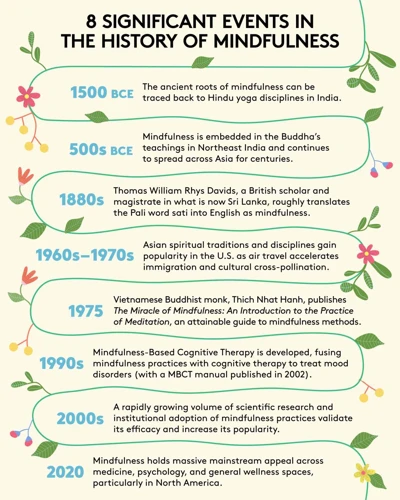
Now that you have a good understanding of the history, benefits, and types of meditation, it’s important to explore techniques that can enhance your practice. Meditation is a personal journey, and what works for one person may not work for another. However, there are a variety of techniques that can support and deepen your meditation practice. In this section, we will examine several methods for enhancing your meditation experience, including breathing techniques, mantras and chanting, and yoga and movement meditation. By incorporating these techniques into your practice, you can cultivate a deeper sense of inner peace, focus, and awareness.
Breathing Techniques
One of the most basic and effective techniques for enhancing your meditation practice is focused on breathing. There are several different breathing techniques to consider, each with its own unique benefits. Here are a few examples:
| Technique | Description | Benefits |
|---|---|---|
| Deep Breathing | Breathing in slowly and deeply through your nose, filling your lungs with air, and exhaling slowly through your mouth. | Reduces stress and anxiety, lowers blood pressure, increases oxygen flow to the brain. |
| Counted Breathing | Counting each inhale and exhale, typically starting with a count of four and gradually increasing to a count of eight or ten. | Calms the mind, improves focus and concentration, regulates breathing patterns. |
| Alternate Nostril Breathing | Closing off one nostril and inhaling through the other, holding for a moment, then exhaling through the opposite nostril. This is typically repeated several times, alternating nostrils. | Regulates breathing, reduces anxiety, balances energy in the body. |
By incorporating breathing techniques into your meditation practice, you can enhance your ability to relax and focus your mind. These techniques can be used in combination with other meditation methods, such as mantras or visualization, to deepen your experience and bring about a greater sense of inner peace and well-being.
Mantras and Chanting
When it comes to meditation techniques, mantras and chanting are another popular choice. A mantra is a word or phrase that is repeated during meditation to help focus the mind and achieve a deeper state of relaxation. It is often derived from ancient spiritual texts and can be in any language. Chanting involves repeating a specific sound or phrase and can be done alone or in a group.
Studies have shown that reciting mantras and chanting can have a positive impact on the mind and body. In fact, researchers have found that chanting can help reduce stress, anxiety, and even depression. This is because the repetitive nature of the practice can help calm the mind and bring about a sense of peacefulness.
There are several different types of mantras and chants that can be used in meditation. Here are a few examples:
| Mantra/Chant | Meaning |
|---|---|
| Om | Considered the most sacred mantra in Hinduism and Buddhism, it represents the sound of the universe |
| So Hum | Means “I am that” in Sanskrit and is often used to help connect with the universe and find inner peace |
| Om Mani Padme Hum | A Buddhist chant that means “Om, jewel in the lotus, hum” and is believed to help cultivate compassion and wisdom |
| Gayatri Mantra | An ancient Hindu mantra that is believed to inspire wisdom and enlightenment |
While chanting and reciting mantras can be a powerful tool for meditation, it may take some time to find the right one that resonates with you. It’s important to choose a mantra that has personal meaning and significance to you. Experiment with different ones until you find the one that truly speaks to you.
Incorporating mantras and chanting into your meditation practice can be as simple as repeating the chosen mantra or chant for a few minutes at the start or end of your meditation session. You can also use it as a focal point during your practice by repeating it silently to yourself throughout the meditation.
Using mantras and chanting can be a powerful tool to take your meditation practice to the next level and achieve a deeper state of relaxation and inner peace.
Yoga and Movement Meditation
When people think of meditation, sitting still comes to mind. However, sitting still in one place is not the only way to practice meditation. Movement can also be used as a form of meditation with yoga and movement meditation being popular methods.
Yoga: Yoga is a form of meditation that involves movement and breathwork. It is a popular practice that originated in ancient India and has since spread around the world. Practitioners hold various poses while focusing on their breath and clearing their minds. There are many different types of yoga and each has its own unique benefits. Vinyasa and Ashtanga yoga are known for being more physically challenging, while Hatha and Restorative yoga are more gentle and relaxing.
Movement Meditation: Movement meditation involves mindfully moving the body to promote relaxation and focus. It can incorporate various types of movements such as walking, dancing, or even just swaying to music. The goal of this type of meditation, just like with traditional meditation, is to quiet the mind and become more present in the moment. Movement meditation is often used as a way to release pent-up energy or emotions, and provide a new perspective.
Both yoga and movement meditation provide an opportunity to connect the mind and body while promoting relaxation and mindfulness. Incorporating these practices can be a way to deepen your meditation practice and gain a new perspective on your internal world.
Common Obstacles to Meditation and How to Overcome Them
Meditation can be a powerful tool for managing stress and improving overall well-being, but it’s not always easy to make it a regular practice. There are many common obstacles that can get in the way, but with some simple strategies, you can overcome them and reap the benefits of meditation.
Obstacle #1: Lack of Time
One of the most common obstacles to regular meditation practice is simply not having enough time. It can be hard to fit it into a busy schedule and it may feel like there are more pressing tasks to attend to. However, meditation doesn’t necessarily have to take up a lot of time. Even just a few minutes a day can be beneficial. Try waking up a little earlier or fitting it in during a lunch break or before bed.
Obstacle #2: Difficulty Concentrating
Another challenge of meditation is maintaining focus. It’s common to find your mind wandering or getting distracted by external noise or thoughts. The key is to not get discouraged and to practice gently bringing your focus back to your meditation object, whether it’s your breath, a mantra or visualization. Over time, it will become easier to maintain concentration.
Obstacle #3: Physical Discomfort
Sitting still for extended periods of time can be challenging, especially for those with physical discomfort or chronic pain. Experiment with different positions or try sitting on a cushion or chair to find a comfortable posture. You could also try gentle yoga or stretching beforehand to help ease tension and stiffness.
Obstacle #4: Lack of Motivation
Sometimes, it can be hard to stay motivated to meditate regularly, especially if you’re not seeing immediate results. It can be helpful to set realistic goals for your practice and to celebrate small milestones along the way. Try finding a meditation buddy or group to practice with, or seek out inspiring resources like books or podcasts to keep you motivated.
Obstacle #5: Self-Doubt
Finally, self-doubt can be a significant obstacle to meditation. It’s easy to feel discouraged or like you’re not doing it “right.” Remember that meditation is a personal practice, and there’s no one “right” way to do it. Be kind and patient with yourself, and don’t hesitate to seek guidance or support from a teacher or trusted friend.
By identifying and addressing these common obstacles, you can cultivate a consistent and fulfilling meditation practice that enhances your overall physical, mental, and emotional well-being.
Conclusion
As we explored the fascinating history and science of meditation, it’s clear that this practice has withstood the test of time, remaining relevant and impactful in modern times. The benefits of meditation are vast, from reducing stress and anxiety to promoting overall physical health and emotional wellbeing.
Science has also shown that meditation can have significant effects on the brain and body, with studies demonstrating changes in brain structure and function, reduced inflammation, and improved immune function. Spiritual and scientific correlates have also been discovered, revealing that meditation can connect us to something greater than ourselves.
There are various types of meditation, each with their unique benefits, and techniques that can enhance our practice. Breathing techniques, mantras and chanting, and yoga and movement meditation can all help deepen our meditation experiences.
However, it’s not uncommon to face obstacles when trying to establish a meditation practice, such as restlessness, distractions, or difficulty quieting the mind. It’s important to acknowledge these obstacles and develop strategies to overcome them.
Overall, meditation is a valuable tool that can greatly improve our physical, mental, and emotional health. Incorporating it into our daily lives can foster a greater sense of inner peace and wellbeing, helping us navigate the challenges of modern life with greater ease and grace.
Frequently Asked Questions
What are the benefits of meditation?
Meditation has been shown to have physical, mental, and emotional benefits, including reduced stress and improved focus and well-being.
Can anyone meditate?
Yes, anyone can meditate regardless of age or background. It is a practice that can be tailored to individual needs and abilities.
What is mindfulness meditation?
Mindfulness meditation involves focusing on the present moment and observing thoughts and feelings without judgment or attachment.
How does meditation impact the brain?
Research has shown that regular meditation practice can increase the density of gray matter in areas of the brain associated with learning, memory, and emotion regulation.
Is meditation a form of religious practice?
While meditation has roots in religious and spiritual traditions, it can be practiced as a secular and non-religious activity for anyone seeking its benefits.
What is Transcendental Meditation?
Transcendental Meditation is a specific type of meditation practice that involves the use of a mantra or sound to quiet the mind and bring about a deep state of relaxation.
Do I need to sit cross-legged to meditate?
No, while sitting cross-legged is a common position for meditation, it is not a requirement. Other comfortable seated or lying-down positions can be used.
How long should I meditate for?
Starting with just a few minutes a day and gradually increasing the time as you become more comfortable with the practice is recommended. Ultimately, the amount of time spent meditating can be tailored to individual needs and goals.
What are some techniques for enhancing my meditation practice?
Some techniques for enhancing your meditation practice include adding breathing techniques, mantras or chanting, and incorporating yoga or movement meditation.
What are common obstacles to meditation and how can I overcome them?
Common obstacles to meditation include a busy mind, discomfort, and lack of consistency. Strategies for overcoming these obstacles include setting realistic expectations, using guided meditations, and finding an accountability partner or group.

